Featured Articles
MANNY CAN WIN THIS FIGHT
On March 29, 2012, I published a column on this very site claiming that Manny Pacquiao would defeat Floyd Mayweather if they were to meet in a boxing match–at that time.
The illusive matchup seemed so real and so close for so long. Finally, the two best fighters of a generation (who maddeningly fought at the same weight) will finally square off and answer this question definitively: Who would win?
Today, I’ll revisit the key points in my thesis and see which ones hold up, which ones are no longer accurate (a lot can and has changed in 3 years in boxing), and who I think wins the fight. As a bonus, and since I’ll be watching this from Las Vegas’ legendary atmosphere—and the ticket fiasco was as frustrating and wild as advertised–, I’ll be providing my betting tips for fight night to make sure this piece is as lucrative for its readers as it is entertaining.
Sidebar: I’m tired of hearing the argument that this fight is “too late”. Certainly, both fighters have regressed as they approach what should be the downslope of their careers from an age perspective. But I think they’ve roughly declined the same amount. And despite those respective declines, they are still the top-2 draws in boxing, and the top-2 Welterweights in the world. Lastly, the wait should be worth it as their respective declines could turn this into a more fan-friendly affair. I digress.
For reference, here was the previous post:
http://www.tss.ib.tv/news/articles-frontpage/14332-pacquiao-would-beat-mayweather
Key Points from March 2012:
1) Floyd’s fight vs. Juan Manuel Marquez and Manny Pacquiao’s 4 fights vs. Marquez are not relevant comparisons. The transitive property does not apply in boxing.
Anyone who’s ever tried to prognosticate the outcome of a prizefight simply by comparing outcomes versus common opponents would be a fool. The old adage of “styles make fights” is truer than true and anything other argument would be fallacious.
It just so happens that JMM is the perfect and worthy adversary for Pacquiao (Manny’s explosive speed/offense vs. Marquez’s crisp, technical counterpunching/timing). The fact that Manny got knocked out is also hardly relevant as he was winning the fight, on the verge of his own KO, and simply got caught with the perfect punch. Sure, Mayweather handled Marquez with ease and also fits the technical counterpuncher label, but Mayweather’s speed is/was his greatest asset. Not to say he isn’t still faster than Manny (he certainly is), but he’s certainly not as fast as he was back then (almost 6 years ago by fight time).
Anyhow, the same argument could be made of Pacquiao v. Cotto. Whereas Floyd won a close and tough fight, Manny dismantled Cotto who was way closer to his prime then compared to when Mayweather fought him (this isn’t in question). Same story with Manny’s annihilation of De La Hoya compared to Floyd’s razor-thin decision over DLH (Oscar was more washed up for Manny in this example)– they simply aren’t relevant in this discussion.
It’s simple. Styles make fights, and Manny’s style poses problems for Floyd.
1) He’s a Southpaw: I don’t think there’s any merit to claims of Floyd avoiding southpaws, but lefties make you change a LOT on both offense and defense and Floyd hasn’t fought a truly high-level left-handed fighter in a while
2) Very quick puncher: While Floyd has a speed advantage, only Zab Judah could match Manny’s quick (and Lefty) punches, which did get through on occasion
3) Combination puncher (sometimes): – This is the key to the entire fight. Floyd can block/dodge/deflect/counter any single shot, but Mayweather’s programmatic counters don’t account for Pacman’s angles/combos (no sparring partner can mimic them). He’ll have an answer for Manny’s 1-2s, so Manny MUST commit to jab first.
4) Manny is a hard puncher: While Manny is not a thudding, heavy-handed power puncher like Marcos Maidana, he has plenty of pop in his hands. He may not hurt Floyd as in knock him down, but Floyd cannot get lazy and take a few arm punches like he did routinely against Maidana.
5) Aggressive, move-forward fighter: Floyd is at his best in the center of the ring and when he gets off first. Manny will engage him in exchanges and continue moving forward. He is not the plodding, rough-him-up type, but more explosive combos before resetting. If Manny can avoid counter uppercuts around the ropes and effectively moves his head when throwing, he should be able to back Floyd up routinely.
6) Unique Angles: As mentioned, there’s no sparring partner to mirror Manny’s angles. They’re unconventional, imaginative, and not replicable. Floyd’s relatively impenetrable defense doesn’t account for how he can get around/between opponents’ guard.
7) Footwork. Manny’s greatest asset has always been his footwork. His explosiveness in closing/creating distance and scoring angles is elite. Whereas Floyd can rely on his ring smarts/hand speed to win exchanges, he’s never faced someone who will both willingly exchange with him and then also reset himself in good punching position without getting reckless/lazy.
2) Manny has more ways to win since he could conceivably knock out Floyd, but the opposite is not true.
-I’m far less convinced now that Manny could knock Floyd out. Manny’s power really hasn’t come up with him through all these weight classes. He still has very hard punches that do damage, but he hasn’t knocked anyone silly in a long time. And he hit Chris Algieri with some very hard shots… but didn’t knock him out. I definitely worry about Manny’s chin after the lights out KO he suffered in his fourth fight with Marquez. Nobody is ever completely the same after a total lights-out blow like that. I’ve seen enough to know you become more susceptible to KOs, etc., but Manny hasn’t looked much different in his recent fights after the KO. He’s not much slower (no more than standard aging would produce), less tentative (OK, maybe a tiny bit), or more prone to being hurt. He’s not been really hit by a Welterweight puncher with any significant pop, but he’s taken clean blows. I doubt either fighter scores a KO, so I think the safest bet of the night is that the fight goes 12 full rounds. (Over 11.5 Rounds = -300 (Bet 300, win $100))
3) Mayweather’s comfort level in exchanges would be a weakness against Manny
Floyd is straight up programmed to be a boxer. It’s uncanny. That said, his defensive instincts/reactions aren’t as adept to weird angles that Cotto and Maidana threw at him, and most of all those which Manny will throw at him. Floyd is used to winning almost all exchanges he’s in given his prowess for both defense and counter-punching. He’s the best at both in the last 20 years. That said, he isn’t the same flawless fighter he was 5-10 years ago, and if he doesn’t connect on his initial counters, he will be facing multiple punches with both hands from weird angles. That’s what Manny does. Mayweather’s comfort level in said exchanges will leave him vulnerable to the follow-up shots.
4) Along the ropes, Manny’s volume style would bother Floyd, or at least convince judges that he’s doing enough damage to squeak out rounds.
Manny doesn’t have a smothering style like Maidana, Cotto, and even Oscar De La Hoya employed against Floyd. That said, against the ropes, Manny will rip off 5, 6, 7, and even 8-punch combinations like this:
{youtube}Fm6eMjjjaKs{/youtube}
Notice how he lands around the guard without crowding him. He puts his opponent on the end of shots to maximize power. Now, Mayweather will be very dangerous here with uppercuts. VERY. However, Manny doesn’t even need to land a ton cleanly to win this fight. Simply by looking like he’s doing damage can rack up close rounds on the scorecard in his favor. This is significant and has led to all of the closely scored fights for Floyd in the last several years.
5) Manny steals 2-3 rounds on late flurries
Similar to the previous point, the scorecards will likely come into play since this likely goes the full 12 rounds. There’s likely to be several close rounds, and Manny’s late flurries (something he does often) is likely to steal him at least 2-3 rounds. Any one of those can be the difference of a 115-113 decision going his way.
6) Floyd is a 1-and-done puncher and will be out-landed in total
Floyd needs to be first as Paulie Malignaggi kept referencing during Mayweather-Maidana 1. If he is, he demoralizes people. I genuinely think Floyd will be out-thrown by over 200 punches, and out-landed by more than 50. It’s common for him to be drastically out-thrown. It’s not common for him to be out-landed. Pacquiao can only win if this happens (which would be a byproduct of establishing a varied jab and throwing punches in bunches).
7) Floyd would need to show skills he hasn’t in a long time: standing in middle of ring and winning an inside fight, slugfest, etc.
-Maidana 1 was a slugfest. I suppose so was his Cotto fight. When in the center of ring, he owned both. Floyd’s inability to dictate where fight took place is alarming and what made them interesting fights. Pacquiao could be the one guy who can land (not even win exchanges, just land) anything significant against Mayweather in the center of ring. I actually think this turns into a slugfest, and Floyd has now proven he can handle himself well in those types of fights. He remains calm, confident, and closes the show well. This point is no longer accurate.
Important point not mentioned: Manny’s demeanor when he gets hit. If you watch any of Manny’s earlier classics with Marquez, Morales, etc…he gets really fired up when gets tagged. Whereas Floyd nearly always frustrates his opponents by completely shutting down their respective offense (see: Canelo Alvarez, Robert Guerrero, and many others), and then they get wild and mentally defeated. Manny won’t do this. You’ll see when Mayweather lands flush right hands, Manny will bang his gloves together and look to return fire immediately. He’s one of those guys that needs to answer anything he takes on the chin. It’s why this fight has the potential to be a firefight.
End of the day: If Manny can establish his jab early, and continue to punch in combinations/high volumes, he will win what I expect to be a fantastic fight. I get the feeling this will be worth the wait, we’ll want a rematch, and I can’t wait to be there for it.
The betting options are:
Manny by KO, TKO, DQ: +400
Manny by Decision: +400
Manny to win: +160
Floyd by KO, TKO, DQ: +500
Floyd by Decision: -130
Floyd to win: -200
The most sensible bet would be to bet BOTH Manny by KO and Manny by Decision. While I think Decision is the far more likely scenario, betting $100 on both would return a $200 profit combined if Manny wins (regardless of how). If you just Bet on Manny winning, $200 investment only nets the bettor $120 in profit.
If you do like Floyd, I think the bet is to pick him by KO at +500. He should NOT be a 2-to-1 favorite, but I can definitely see a scenario where he catches Manny flush with counter uppercuts and right hands and potentially stops Manny.
Bottom line, this is a pick-em fight, and at +160, Manny is the better bet.
The Flurry:
-Gennady “GGG” Golovkin is the best fighter in boxing P4P. The only one who can give him a good fight (and possibly beat him) is Andre Ward. I expect we see that fight in 2016 despite Ward’s weight advantage. Kovalev is in top-10 for sure. As HBO’s cornerstones, those are great building blocks. Both are must-see TV for the hardcore fans… but is that enough?
-PBC is GREAT (so far) for boxing, and makes me happy to hear casual/non-fans talking about it. It’ll be interesting to see if Haymon tries to make it more like a “league” than a TV series, which seems to be the case. He could unify belts for real, and again that would be tremendous for boxing. If good guys keep fighting good guys (assuming you don’t have to be a “Haymon Guy” to fight in PBC), we don’t have these Manny-Floyd scenarios in the future. But will the Roc Nation guys be allowed on cards? Regardless, competition is good for business. HBO will need to continue to step up their games, adapt, or be left in the dust. That’s a good thing for fans as streaming media continues its takeover of media consumption in homes.
-Unless Adrien Broner takes major leaps forward technically, he’ll never be the #1 guy at 140/147. Less of a comment on him than a comment on the depth of superstar-level talent there (Crawford is fantastic, Matthyse a lurking threat, Garcia looks legit but is untested, Mikey Garcia is coming, Porter/Brook/Khan are all championship material, and even guys like Devon Alexander are tough outs).
-Hope to see Tim Bradley soon, he’s always entertaining and a top 10 P4P fighter.
-If Matthysse-Provodnikov doesn’t win FOY, it’s because Mayweather-Pacquiao will.
Photo From Will Hart/HBO
-

 Featured Articles3 weeks ago
Featured Articles3 weeks agoAvila Perspective, Chap. 330: Matchroom in New York plus the Latest on Canelo-Crawford
-
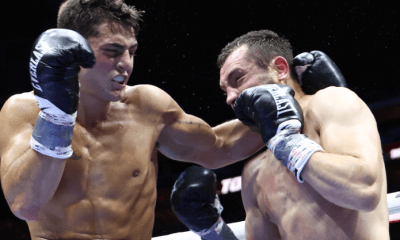
 Featured Articles1 week ago
Featured Articles1 week agoVito Mielnicki Jr Whitewashes Kamil Gardzielik Before the Home Folks in Newark
-
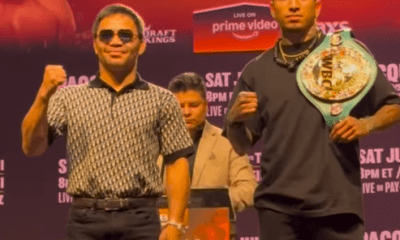
 Featured Articles4 weeks ago
Featured Articles4 weeks agoAvila Perspective, Chap 329: Pacquiao is Back, Fabio in England and More
-
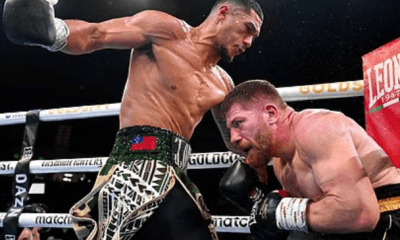
 Featured Articles3 weeks ago
Featured Articles3 weeks agoOpetaia and Nakatani Crush Overmatched Foes, Capping Off a Wild Boxing Weekend
-
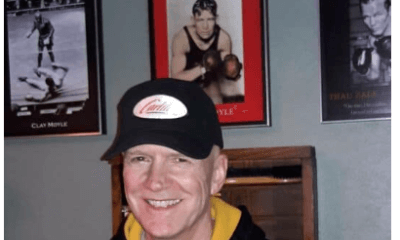
 Featured Articles2 weeks ago
Featured Articles2 weeks agoCatching Up with Clay Moyle Who Talks About His Massive Collection of Boxing Books
-

 Featured Articles3 weeks ago
Featured Articles3 weeks agoFabio Wardley Comes from Behind to KO Justis Huni
-
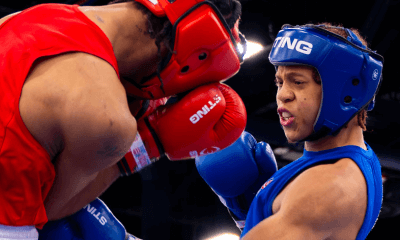
 Featured Articles1 week ago
Featured Articles1 week agoMore Medals for Hawaii’s Patricio Family at the USA Boxing Summer Festival
-
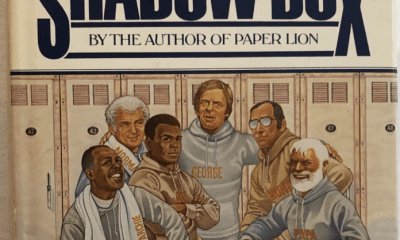
 Featured Articles4 weeks ago
Featured Articles4 weeks agoDelving into ‘Hoopla’ with Notes on Books by George Plimpton and Joyce Carol Oates















